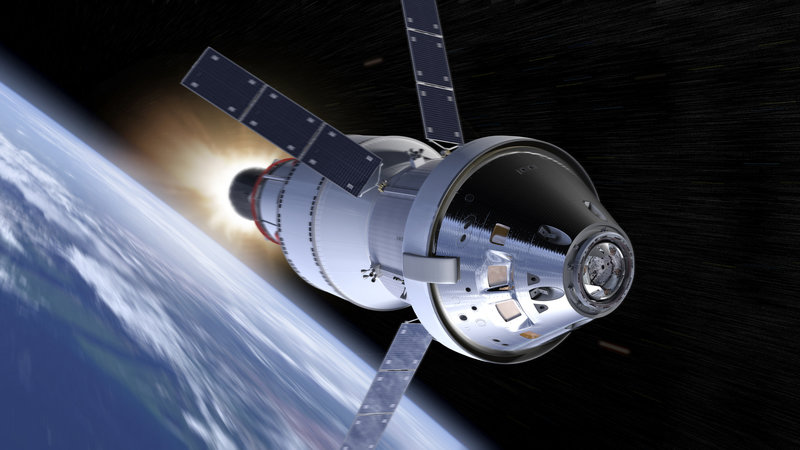Revolutionizing Data Processing and Storage
One of the key benefits of cloud space technologies is the ability to store, process, and analyze vast quantities of data in real time. Satellites, space telescopes, and other space-based instruments generate enormous data streams, capturing everything from high-resolution images of the Earth to deep-space observations. Historically, managing and processing this data required costly, on-premises infrastructure. Now, with cloud solutions, space agencies can offload this data to virtual servers, scaling resources based on demand without the high costs of physical equipment.
For example, NASA has partnered with AWS to process satellite imagery and environmental data. By using cloud technology, NASA can provide scientists with quick access to critical information that aids in everything from weather forecasting to disaster response. Similarly, Google Cloud has enabled the European Space Agency to store and analyze terabytes of space data, supporting various research projects and missions.
Enhancing Satellite Communications and Operations
Cloud platforms allow for the streamlined management of satellite communications and operations, which is essential for reliable data transmission and satellite control. Ground stations—those facilities that communicate with satellites—can now integrate with cloud networks to relay information directly from satellites to data centers without the need for extensive hardware. This approach reduces delays, costs, and physical constraints, making satellite communication more accessible and efficient.
Cloud-based solutions also allow companies and agencies to simulate satellite health, monitor orbits, and even detect possible collision threats. This level of real-time control and monitoring ensures that satellites can operate at peak efficiency while remaining in safe, stable orbits.
Scalability for Small Satellites and Educational Projects
The scalability of cloud solutions has opened up space exploration and satellite operation to a broader audience. In particular, small satellites and educational projects, like CubeSats, can now benefit from cloud resources without needing to purchase expensive infrastructure. Cloud providers offer affordable, pay-as-you-go models, enabling even small research teams or educational institutions to collect, process, and store their satellite data.
These cloud solutions are particularly beneficial for projects that are short-term or seasonal. Teams can scale down resources when data needs are low and quickly ramp up during peak periods, such as when a satellite is actively collecting data. This flexibility has contributed to a surge in CubeSat projects worldwide, as students, researchers, and even private hobbyists can now access resources that were previously exclusive to large space agencies.
Fostering Global Data Access and Collaboration
With cloud-based data sharing, researchers from around the world can access and analyze space data as soon as it becomes available, leading to more collaborative and impactful scientific discoveries. The cloud provides secure, shared access to data, facilitating international partnerships and cross-disciplinary research. Scientists studying climate change, for example, can work together on shared data sets regardless of their location, and satellite data can be readily accessed by humanitarian organizations responding to natural disasters.
This collaborative approach has implications for numerous global challenges, including environmental monitoring, resource management, and biodiversity conservation. By democratizing access to satellite data, cloud space technologies are enabling organizations and governments to make better-informed decisions in real time.
Edge Computing: Processing Data in Space
Cloud technology is also making strides in edge computing for space applications. Edge computing involves processing data closer to where it is collected, such as directly on a satellite. This approach reduces the need to transmit vast amounts of raw data to Earth, conserving bandwidth and improving response times. For instance, AI algorithms can be used on satellites to identify relevant data (e.g., detecting specific weather patterns or tracking objects of interest) before sending only essential data back to Earth.
Edge computing reduces the load on ground stations and can significantly improve the efficiency of space missions, particularly for satellites in lower Earth orbits. This method is already being used in Earth observation missions to capture high-priority images while filtering out redundant or low-value data, making satellite data processing faster and more relevant.
Simulating Space Missions with AI and Machine Learning
Cloud technology supports the simulation and analysis of space mission scenarios by providing the computational power needed to run complex simulations. Mission planners can use AI and machine learning (ML) to predict outcomes, enhance navigation, and assess potential risks. Cloud-based simulations are useful in predicting satellite trajectories, optimizing fuel consumption, and even modeling spacecraft behavior under extreme conditions.
AI and ML models can also help detect anomalies, track satellite health, and forecast potential issues. This predictive capability reduces risks and improves mission safety, as space agencies and private companies can proactively address potential issues before they escalate.
A Future with Cloud-Driven Space Exploration
Cloud space technologies are democratizing space, making it easier for organizations to store and analyze data, operate satellites, and even explore the edges of our solar system. As cloud providers continue to innovate, the future of space exploration will become more accessible, collaborative, and data-rich, driving new discoveries and solving global challenges.
This blend of cloud computing and space technology is transforming how we understand and interact with the universe, setting the stage for a new era of space exploration—one that is faster, smarter, and more connected than ever.


